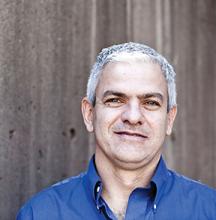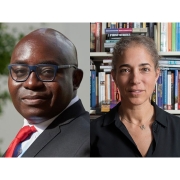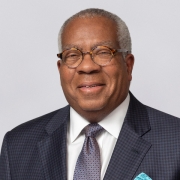Life out of Context

By Loraine Terrell
The story of immigration in America is a complicated one. Nostalgic, sepia-tinted images of a welcoming Ellis Island symbolize an era long past. Today, concerns about security and the economy are asserted by the wire-and-steel wall along the United States-Mexico border, a stark emblem of immigration in the 21st century.
For migrants themselves, immigration is likewise a complicated story. However great the opportunity, migrating can impose a formidable cost, including separation from loved ones, isolation from expanded networks of friends and relatives and the loss of a cultural context.
Emilio Parrado has spent more than 10 years exploring migration’s disruptive effects. Parrado, a professor of sociology who came to Penn in 2008 from Duke University, has focused on Hispanic immigrants residing near Durham, N.C.—a group that is primarily Mexican and largely undocumented. A demographer by trade, Parrado’s statistics tell a nuanced story of what happens when people leave their homelands.
Between 1990 and 2000, close to eight million Latin American migrants entered the United States, nearly doubling the number of foreign-born Hispanics in the country. Mexico alone provided more than half of the new arrivals. In North Carolina, Parrado says, “The Latino population exploded in the 1990s.” The majority of these immigrants are men, mainly young single men and married men who leave their wives behind.
This large influx of recent migrants, according to Parrado, presented an exceptional opportunity to observe the ways immigration affected them. As migrants adapt to their new home over time, identifying and isolating the immediate impact becomes more difficult. Among the impacts associated with immigration are behavior changes with health consequences, including alcohol use, depression and risky sexual behavior.
In 2006, Hispanics represented only 15 percent of the U.S. population but 19 percent of all people with AIDS. Hispanics contracted HIV through heterosexual transmission at twice the rate of non-Hispanic whites. In North Carolina, Hispanics accounted for 59 percent of HIV infections among foreign-born residents from 1998 to 2007. For other sexually transmitted infections, the numbers are even more dramatic: Hispanics in the United States were diagnosed with 10 times as many new syphilis cases as non-Hispanic whites.
To understand the behaviors in migrant communities that might account for these disturbing numbers, the first step is the hardest: gaining sufficient access to ask questions. As Parrado notes, “Low-skilled immigrants who come to the U.S. are very difficult to study. It’s difficult to reach them. They have recently arrived; they don’t speak English; they are undocumented for the most part—it’s like they live in shadows.” In situations like this, standard survey methods have little to offer.
To overcome these obstacles, Parrado and his colleagues built an inside team—a group of 14 Hispanic men and women who were active with organizations in the immigrant community. All migrants themselves, members of this group were involved in all aspects of the research, from developing the questionnaire to locating buildings where migrants lived and conducting the surveys. Their involvement was critical in getting information. Parrado acknowledges that “everything from their local knowledge to their style of dress made respondents more likely to open up.”
The approach was productive. Parrado and his colleagues were able to obtain detailed information about many aspects of migrants’ lives in the United States, including behaviors like the use of a commercial sex worker (CSW). (“Commercial sex worker” is the more neutral term for “prostitute” preferred by researchers and health workers.) It turns out that using CSWs is common among migrants and takes various forms: visits to brothels, encounters with workers who make visits to apartments where migrants live and encounters with streetwalking CSWs. Each of these situations is associated with its own degree of HIV risk. Encounters with apartment-visiting CSWs, a category less widely documented prior to Parrado’s work, involves less risk than with “streetwalkers,” who are more likely to be intravenous drug users and to engage in unprotected sex.
Parrado noted a number of factors that seem to promote CSW use. The skewed gender composition of the migrant community is an important one. Fewer women means that men’s opportunities to form stable relationships are limited. Isolated neighborhoods, communities with a higher proportion of recent migrants and neighborhoods that are run down all are related to higher CSW use. Parrado also noted a CSW lifecycle of sorts, where use increases during the first years after migration, peaks at around four years and then declines slowly as migrant men form more social bonds and attachments.
In addition to surveying migrants in Durham, Parrado conducted surveys in eight “sending communities”—the Mexican towns of origin for many of the migrants in the Durham area. The data from these surveys provide a baseline for understanding how migrants would likely have lived and behaved had they never left home. In this way, the researchers were able to hone in on how immigration affects sexual behavior.
With respect to commercial sex, Parrado and his colleagues found that use is dramatically more prevalent among Mexicans in the United States than among their peers in Mexico. Only five percent of single men visited a CSW in Mexico during the previous year, compared to 55 percent of single men and 44 percent of married men living away from their wives in the United States. Based on these results, Parrado was able to conclude that “risky sexual practices are not behaviors they bring from Mexico.” Instead, he maintains, the risky behaviors result from the breakdown of processes responsible for social organization and control. It’s the different social context. In place of communities with extended families and established social norms, you have, as Parrado characterizes it, “young men living by themselves in an apartment without supervision, without contacts with relatives or female members of the family.”
The findings on sexual behavior, Parrado says, have implications for public policy. The fact that men can’t bring their wives when they migrate, or cross the border to maintain contact, makes them more likely to engage in risky behaviors. “If you are trying to address health concerns, this is important,” he observes. “Most of the health interventions tend to focus on teaching people about disease—and there is always room to improve there—but when you retain this social structure there is only so much you can do.” At the same time, he recognizes that changing social structures is challenging, given the recent trajectory of immigration policy.
Parrado’s research encompasses aspects of migrants’ lives beyond sexual behaviors and health (see sidebar). It has also given him an intimate look at the isolation and vulnerability that many migrants experience. Members of the Durham study team noted that the people they interviewed were frequently relieved to discuss their circumstances—recently arrived and with no social network, many of them had no one else with whom to share their problems. Also evident was how their precarious legal status “permeates every aspect of their lives,” Parrado adds. Every day, in situations as ordinary as running a stop sign or wanting to call a child’s teacher, undocumented migrants are aware of how close they are to deportation.
In his ongoing work on the personal, social and health consequences of immigration, Parrado, in collaboration with Penn historian Michael Katz, is beginning to look at the Puerto Rican community in Philadelphia, a diverse, urban environment that presents a distinct set of challenges for a demographer. But, Parrado says, he’s not yet finished with Durham, noting, “We’re still analyzing all of the data; we’re still learning a lot.”





